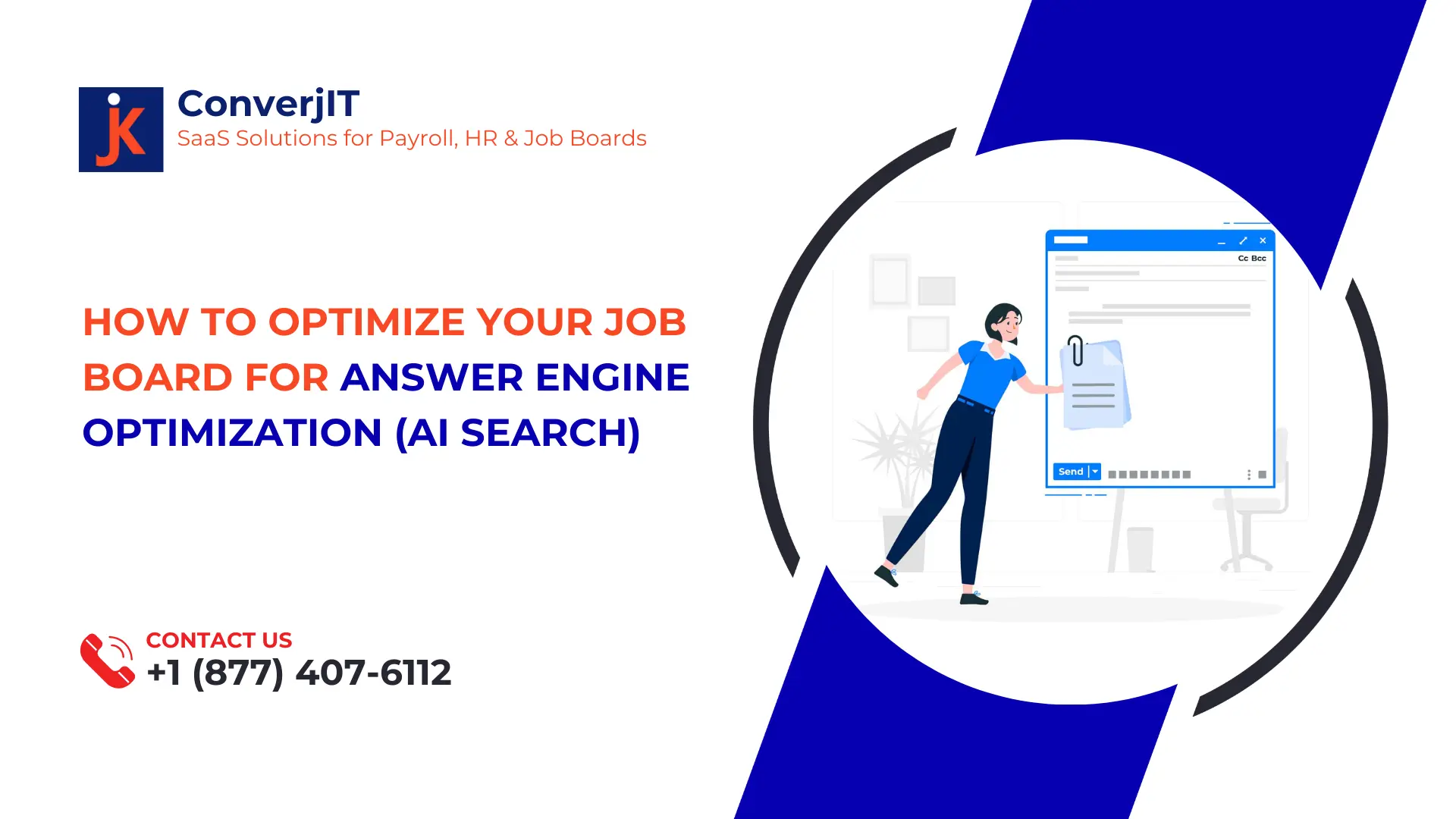Launching a new job board presents a significant challenge: without an initial base of high-quality job listings, your site can appear empty and uninviting to potential job seekers. This “empty board” problem not only diminishes trust but also impacts search engine visibility and user engagement from the outset.
Attracting job seekers requires offering fresh, relevant, and diverse job listings from day one. A robust inventory helps build credibility, boosts SEO, and sets the stage for sustainable growth.
One of the most effective strategies to overcome this hurdle is job scraping—an automated process that collects job postings from reputable sources across the web. By implementing a thoughtful job scraping strategy, you can quickly populate your board with high-quality listings that match your target audience’s needs, laying a strong foundation for success.
Why Listings Matter for Job Board Success
Let’s face it: no one wants to visit an empty job board. Without listings, your site looks abandoned, eroding trust and harming your SEO rankings.
The “empty board” problem is real. Without enough listings, your board won’t appear in search engines, won’t attract employers, and won’t inspire confidence in job seekers.
Start by defining your ideal inventory:
- How many jobs are needed to create a vibrant experience?
- What’s your geographic reach—local, national, or global?
- What’s your niche focus—tech, healthcare, finance?
A healthy board should reflect the expectations of your target audience. Considering the niche and geo factors, has tripped up many job board entrepreneurs – A city or state-level board has a very different sweet spot for ideal jobs inventory than a national site. Further, different niches have differing expectations. For example, a nursing site will have a much higher job inventory expectation than a data scientist focused site within the same geographic boundaries. Regardless, more listings mean better search visibility, increased user trust, and a higher chance of conversion.
But here’s the chicken-and-egg dilemma: how do you get listings without employers, and how do you get employers without job seekers?
That’s where job scraping breaks the cycle.
Understanding Job Scraping: The Basics
What is job scraping?
Job scraping is an automated process that collects job listings from other websites—think company career pages, industry job boards, or government portals—and imports them into your own platform.
Unlike manual posting (where employers log in and post jobs themselves) or API integrations (which require direct collaboration with employers), scraping pulls data from the web at scale.
Key benefits of scraping job postings
- Speed: Populate your board in days instead of months.
- Scale: No real limits – Source thousands of listings from hundreds of sites.
- Cost-effectiveness: Save on manual curation and sales efforts.
Variety of sources: Get listings from employers you might not reach otherwise.
Best Sources to Scrape for High-Quality Listings
Not all sources are created equal. For high-quality listings, prioritize:
1. Top company career pages: Listings directly from employers’ websites are often accurate and up-to-date.
2. Industry-specific job boards: These often have niche roles, but always check their terms of use and get permissions if needed.
3. Government and non-profit sites: Many government job postings are publicly available and can boost your board’s trust factor.
Important note: Always verify source quality and legality. Scraping without respect for copyright or terms of use can get your site in trouble.
Tools and Technologies for Efficient Job Scraping
Ready to get technical? Let’s talk about tools.
Third-party job scraping services:
- Pros: Fast setup, ongoing maintenance, scalability.
- Cons: Cost, reliance on vendor, less control over customization.
- Examples: JobKapture, Careerleaf—these services specialize in feeding your job board with relevant listings.
Tips for scheduling and deduplication:
- Schedule scraping during off-peak hours to reduce server load.
- Use algorithms to deduplicate listings across sources.
- Automate updates to keep listings fresh and relevant.
Strategies to Ensure Listing Quality
A bloated board full of outdated or irrelevant jobs will turn users away. Here’s how to ensure quality:
1. Filter by relevance: Scrape only jobs that match your focus by location, title, and industry.
2. Move duplicates and expired listings: Use logic to cross-check titles, locations, and posting dates.
3. Add value: Categorize jobs, tag them properly, and create company profiles to enrich the user experience.
4. Basic enrichment: Salary estimates, benefits, and company information make your board stand out.
Speed vs. Quality: Finding the Right Balance
When it comes to populating a new job board, it’s tempting to think that more listings equals instant success. But the reality is more nuanced. Bulk scraping thousands of listings overnight might give you volume, but it can also introduce a flood of irrelevant, expired, or even spammy jobs that frustrate job seekers and damage your brand.
The Quality Trap: Why “More Listings” Isn’t Always Better
Job seekers expect accurate, relevant, and up-to-date listings. When they encounter outdated or duplicate jobs, it erodes trust and makes your site look unprofessional. Additionally, search engines penalize low-quality or duplicated content, harming your SEO.
Imagine a board with 20,000 listings—but half are outdated, irrelevant, or duplicates. That’s worse than a focused board with 2,000 carefully curated, relevant jobs.
Tip: Always aim for quality over quantity.
Curating High-Quality Listings vs. Bulk Scraping
Bulk scraping pulls everything in sight, often with little filtering. While this might look impressive on day one, it creates a maintenance nightmare:
- You’ll spend hours (or money) cleaning up duplicates and expired listings.
- Job seekers will lose trust when they see the same job listed multiple times or outdated postings.
- Employers may hesitate to partner with you if your site looks like a spam farm.
Curated scraping focuses on selecting only the listings that align with your niche, location, or target audience. You can:
- Filter by keywords, job titles, or industries that match your board’s focus.
- Exclude jobs older than a certain date (e.g., 14 days).
- Prioritize high-quality sources (like official company career pages or reputable job boards).
Setting Up Incremental or Selective Scraping
Instead of scraping everything at once, incremental scraping means:
- Pulling new or updated listings daily or weekly.
- Checking for updates to existing jobs (e.g., status changes, updated descriptions).
- Removing expired jobs based on the closing date or by monitoring the source page.
Benefits of incremental scraping:
1. Keeps your listings fresh and relevant.
2. Reduces the load on your infrastructure.
3. Makes it easier to manage deduplication and updates.
Selective scraping means:
- Only scraping certain sections of a source site (e.g., only full-time positions or only jobs within specific regions).
- Using advanced filtering criteria (like job title, industry, or seniority level).
- Tailoring your scraping strategy to your board’s unique value proposition (e.g., remote jobs, tech jobs, or executive roles).
Integrating Scraped Listings Into Your Job Board
Once you’ve scraped the listings, you need to import them smoothly.
1. Common formats: XML, JSON, and CSV are the most popular. Make sure your board can handle them.
2. Automation workflows: Use cron jobs, API calls, or scheduled tasks to automate imports and updates.
3. Managing updates and deletions: Listings expire. Implement checks to remove outdated jobs and keep your board fresh.
Scaling Your Scraping Operation
Scraping isn’t a one-time task. To stay competitive:
1. Continuous scraping: Keep your board updated with new listings as they become available.
2. Monitor changes in source sites: Websites change structures often. Implement error handling and monitoring to avoid breakage.
3. Invest in maintenance: A reliable scraping operation requires consistent monitoring and adjustments.
Conclusion
Job scraping is a smart shortcut for new job boards, enabling you to fill your site with high-quality listings quickly. But scraping is more than just automation—it’s about balancing legality, quality, and scalability.
Ready to take the next step? Consider hiring a scraping expert or investing in third-party services to help you get started.





